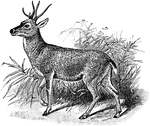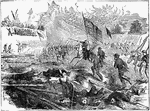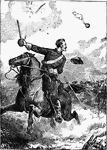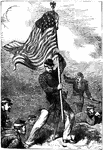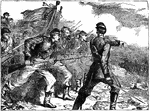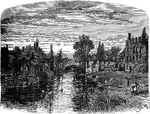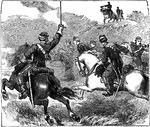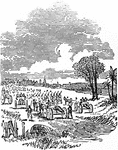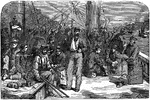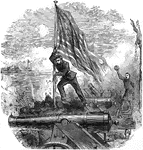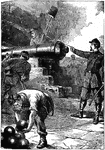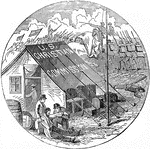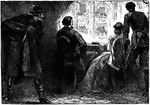New York Peneplane
North-south section across western New York, showing the three cuestas and lowlands and the tilting…
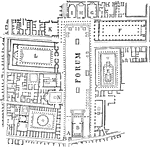
Forum of Pompeii
"Forum of Pompeii. A, principal entrance; B, a Corinthian temple; C, the public prison (carcer publicus);…

Gable at Notre Dame de Paris
"Gable of the South Transept Door of Notre Dame, Paris; 13th century." -Whitney, 1911
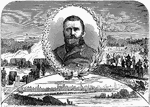
Ulysses S. Grant
Ulysses S. Grant, born Hiram Ulysses Grant (April 27, 1822 – July 23, 1885), was an American general…
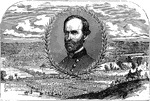
General Sherman
William Tecumseh Sherman (February 8, 1820 – February 14, 1891) was an American soldier, businessman,…
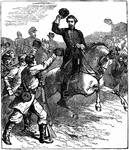
George McClellan
George Brinton McClellan (December 3, 1826 – October 29, 1885) was a major general during the…

George McClellan at Battle of Antietam
George Brinton McClellan (December 3, 1826 – October 29, 1885) was a major general during the…

Battle of Antietam
The Battle of Antietam (also known as the Battle of Sharpsburg, particularly in the South), fought on…

Kearny Cross
The Kearny Cross was a military decoration of the United States Army, which was first established in…

David Glasgow Farragut
David Glasgow Farragut (July 5, 1801 – August 14, 1870) was a flag officer of the United States…

Nandu
Nandu or "Rhea Americana, the so-called American Ostrich... is found from Bolivia Paraguay, and South…

Kiwi
Kiwi, Apteryx australis, of the South Island, is lighter (than the Apteryx mantelli of North Island),…
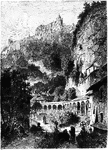
Peter's Churchyard in Salzburg
The collegiate church of St. Peter was built in the Romanesque style in the twelfth century. The burial…

City, Passau
Passau is one of the oldest cities in Germany, a village of Gauls in early days; and later, a Roman…

View of Lintz
A picturesque view of the Lintz (Linz) city center. Lintz was founded by the Romans, who called it "Lentia."…

The Belvedere Palace
The Belvedere is a baroque palace complex built by Prince Eugene of Savoy Vienna, Austria.The Belvedere…
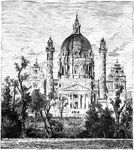
Church at St. Charles Borromeo, Vienna
The Karlskirche (German for St. Charles's Church) is a church situated on the south side of Karlsplatz,…

Storm Petrel Swimming with Reflection
The storm Petrel "of the Mediterranean and North Atlantic from Greenland to South Africa, which breeds…

Tropic Bird Sitting on a Ledge
The Tropic Bird " are chiefly found in the tropical regions of the south; ... this species breeds as…
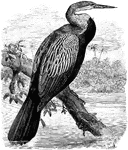
Indian Darter
"The Indian Darter (Plotus melangaster) or snake-bird of tropical and subtropical America, ranging northwards…
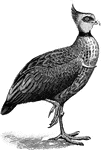
Northern Screamer
"Chauna Cristata, Northern Screamer, is dark grey, with a black ring around the neck and whitish-grey…
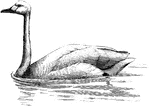
Bewick's Swan
"Cygnus bewicki, Buck's Swan, is white with black feet and bill, the basal half of the latter being…
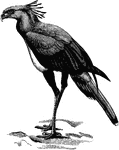
Secretary Bird
"Standing some four feet high on very long legs, this bird (Secretary Bird) gives the impression of…

Two Sparrow Hawk in a Large Flat Nest of Twigs with Five Young Sparrow-Hawk Beside a Tree Trunk
"Accipiter nisus, the Sparrow-Hawk, which breeds throughout Europe, North Africa, Asia north of the…
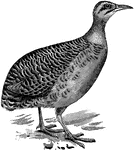
Red-winged Tinamou
"Rhynchotus rufescens,... is grey-brown, with blacker crown, rufous cheeks, neck, and breast, and chestnut…
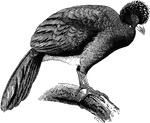
Crested Curassow
Crax alector, Crested Curassow, is black with a purplish gloss, the belly being white, the naked lores…
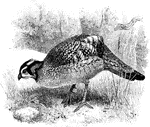
Cabot'sTragopan
"Ceriornis caboti, (Cabot's Tragopan) of South-East China has the latter region buff. The hens are black…
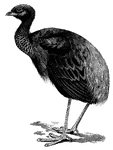
Trumpeter
"Psophia crepitans, the Agami, ranging from British Guiana to Amazonia, is a black bird with velvety…
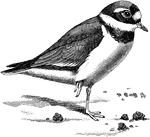
Ringed Plover
"Aegialitis hiaticola, the Ringed Plover, Sand-Lark, or Stone-runner, mistakenly called the "Ring-Dotterel"…

Common Tern
Sterna fluviatilis, the Common Tern, occupying the coasts and inland waters of Europe, temperate Asia,…
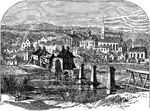
Fredericksburg, VA
Fredericksburg is an independent city in the Commonwealth of Virginia located 50 miles south of Washington,…
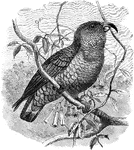
A Kea Sitting a Tree Branch
"Nestor notabilis, the Kea of the south island of New Zealand, has olive-green plumage with blackish…

Hoopoe
"Upupa epops, not unfrequently visits Britain, where it has nested on several occasions; it breeds from…
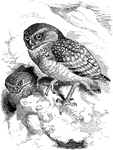
Two Burrowing Owls by the Mountains
"Speotyto cunicularia, the Burrowing Owl, a comparatively long-legged and short -winged bird with incomplete…
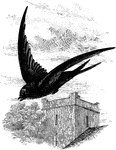
Common Swift Flying Through the Air by a Structure and a Tree with its Mouth Open
"The coloration of the twenty or more species of Cypselus is sooty-black or mouse-brown, frequently…
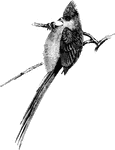
Cape Coly
"Colius capensis, or Cape Coly, has two stripes of black on the back enclosing one of white, the bare…
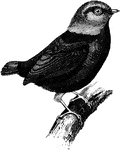
Red-capped Manakin
Pipra mentalis, the Red-capped Manakin, has black plumage with a red head, neck, and thighs.
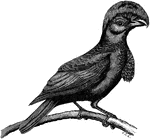
Amazonian Umbrella Bird
"Cephalopterus ornatus, the Umbrella bird, is entirely black, with a huge expanded umbrella-like crest…

Bell-Bird
"Chasmorhynchus niveus, the Bell-bird, ...have lores and orbits bare. The plumage is ordinarily plain…
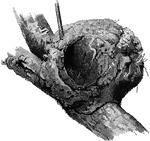
The Nest of an Oven-bird
"The curious nest is placed in exposed situations on branches, in forks of trees or shrubs, on posts,…

Lyre-bird
"Menura superba, the Lyre-bird, of New South Wales and South Queensland, some thirty-three inches long,…
